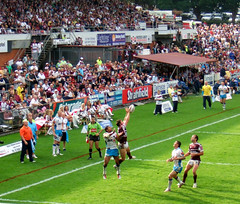
The last weekend that David was in Sydney, we decided to rent a car and drive down the coast of New South Wales. Our first destination was the Royal National Park. Just south of the city, this is the second oldest national park in the world, after Yellowstone: it dates back to 1879! The park has a wide variety of terrain, and in spite of the growth of the city, it is still home to a wide variety of plants, animals, and birds. We stopped briefly at the Visitor Center, where Meghan enjoyed a conversation with the cockatoos, and then we continued on our drive.

The Grand Pacific drive leads south from the park, through coastal towns, lush vegetation, and sweeping views of the ocean. The most famous part of the drive is the Sea Cliff bridge, which hugs sheer cliffs and sweeps out over the open ocean for 665m (about half a mile). It makes for breathtaking vistas...


After a longish drive (on the left side of the road!), we arrived at Jervis Bay. The Jervis Bay territory has an odd history: it was bought by the Federal government in 1915 so that the landlocked capital at Canberra would have access to the sea. Once the Capital Territory became a state [Correction: Became self-governing. Thanks, Anonymous] in 1989, Jervis Bay entered a weird limbo. Most of the bay is either a navy base, or protected as part of the Booderee national park. With its clear water and white sand, Jervis bay is a beautiful, unspoilt bit of Australia.

The national park is also home to a lot of wildlife. As we pulled into the parking lot, we surprised a wallaby, which quickly bounded away, and friendly (but non-native) lorikeets swarmed over us looking for food as we set out on a short walking trail. The path led us out to tidal rock flats, with their bizarre sculpted shapes and hollows.

But we still hadn't seen any kangaroos or wallabies since the first one in the parking lot. As we continued on our walk, dusk set in rapidly, and we started hearing suspicious rustles in the bush, and even the crash-boing-boing-boing of a startled 'roo fleeing through the shrubbery as we approached. And then, finally, we heard a rustle less than 10 feet away from us, and froze. As we slowly inched our way forward, we saw a couple of kangaroos (or wallabies?). They took a while to decide that we were harmless, but after that, even flash photography didn't seem to faze them...













